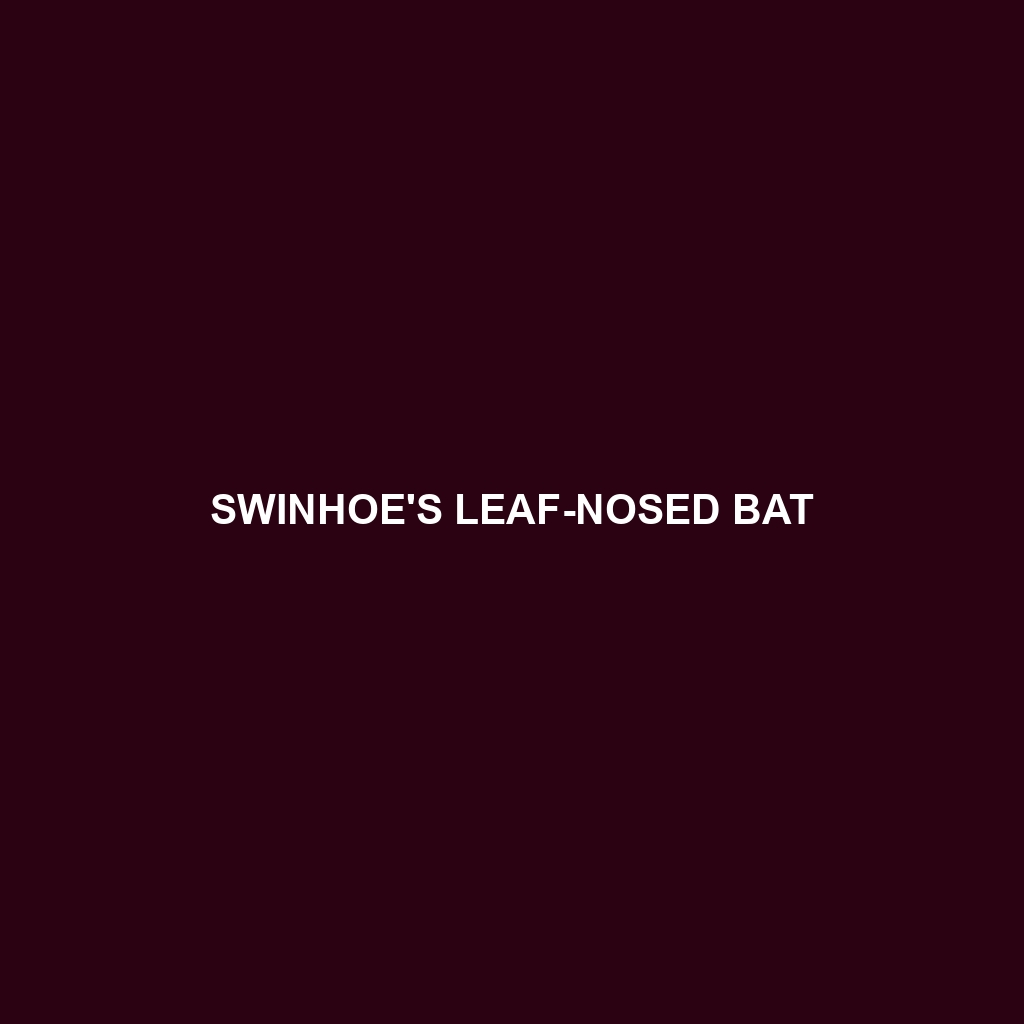Swinhoe’s Leaf-nosed Bat
Common Name: Swinhoe’s Leaf-nosed Bat
Scientific Name: Hipposideros swinhoei
Habitat
Swinhoe’s Leaf-nosed Bat is primarily found in Southeast Asia, specifically in countries such as Vietnam, China, and Taiwan. These bats inhabit tropical and subtropical forests, often roosting in caves or hollow trees, which provide suitable microclimates for their habitat needs.
Physical Characteristics
Swinhoe’s Leaf-nosed Bat is a medium-sized bat, typically measuring around 6 to 8 cm in body length, with a wingspan of approximately 30 to 35 cm. Their fur ranges from dark brown to gray, featuring unique leaf-like nose structures that aid in echolocation. This bat species can be distinguished by its large, rounded ears and distinctive nose leaf, which helps in sound modulation during feeding.
Behavior
This species exhibits nocturnal behavior, actively foraging for food after sunset. Swinhoe’s Leaf-nosed Bat is known for its agile flight and ability to navigate complex forest environments, utilizing echolocation to find prey with remarkable precision. During the day, they often roost in groups, providing social structure and protection.
Diet
Swinhoe’s Leaf-nosed Bat primarily feeds on insects, with a preference for moths and beetles. Its feeding habits involve using echolocation to detect prey in flight, making these bats essential for controlling insect populations in their habitats. Their diet highlights the importance of maintaining healthy ecosystems by regulating pest numbers.
Reproduction
The reproductive habits of Swinhoe’s Leaf-nosed Bat include a breeding season that typically occurs in late spring. Females give birth to a single pup after a gestation period of about 60 days. The young are born hairless and dependent on their mothers, gradually gaining independence as they mature, usually by late summer.
Conservation Status
The current conservation status of Swinhoe’s Leaf-nosed Bat is classified as Vulnerable by the International Union for Conservation of Nature (IUCN). Habitat loss due to deforestation and human encroachment poses significant threats to its population stability, necessitating conservation efforts.
Interesting Facts
One fascinating aspect of Swinhoe’s Leaf-nosed Bat is its exceptional echolocation capabilities, which are among the most refined in the bat family. Additionally, this species has specific roosting preferences, often selecting particular types of caves that provide optimal humidity for nurturing their young.
Role in Ecosystem
Swinhoe’s Leaf-nosed Bat plays a crucial role in its ecosystem by acting as a natural pest control agent. By feeding on various insects, they help maintain biodiversity and stability within their forest habitats. Their interactions with other species also contribute to pollination and seed dispersal, making them a vital part of their ecological community.
